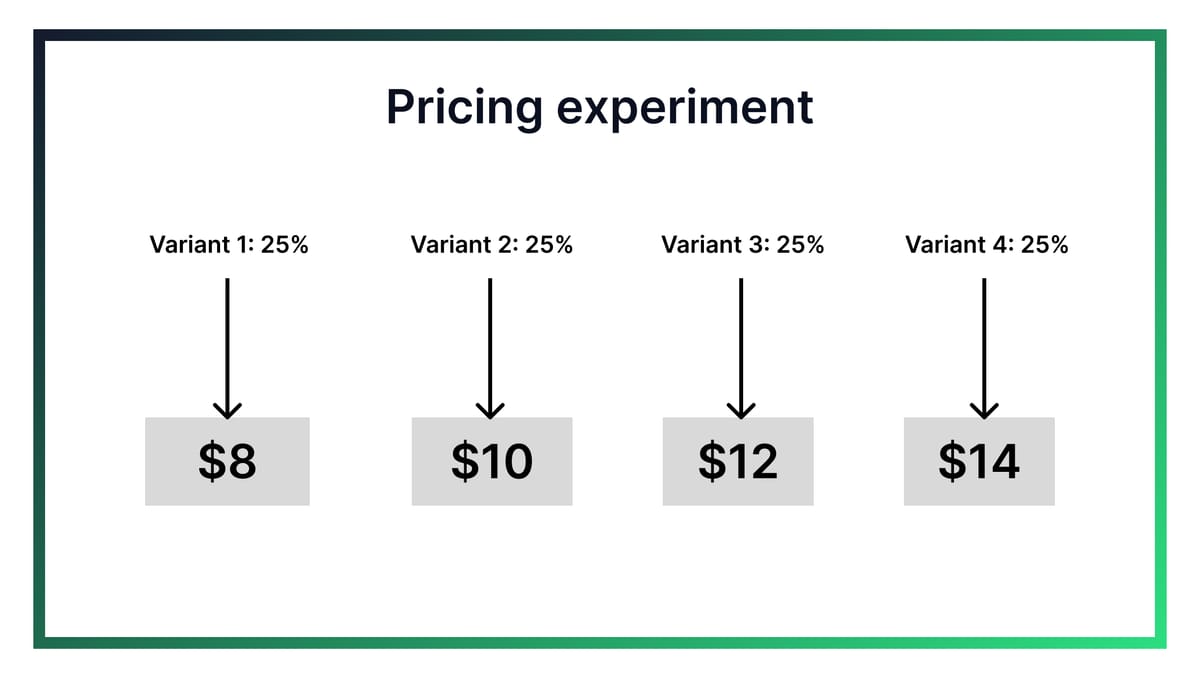How to price your product?

You may have heard of three pricing strategies: cost-based, competitor-based, and value-based pricing. In cost-based pricing, you add a margin to the cost of goods sold (COGS) and set your price accordingly. With competitor-based pricing, you set your prices close to those of your competitors. But have you ever wondered how value-based pricing are determined?
If yes, then this is going to be a good started guide for you. (Also gives good talking point for your next pricing case interview 😄)
Van Westendorp’s Pricing Methodology for value based pricing
Van Westendorp’s Pricing Methodology is a market research technique used to determine consumer price preferences for a product or service. This method helps identify the optimal price point by analyzing consumer responses to specific price-related questions. The PSM involves asking respondents four key questions:
- At what price would you consider the product to be so expensive that you would not consider buying it? (Too expensive)
- At what price would you consider the product to be priced so low that you would feel the quality couldn’t be very good? (Too cheap)
- At what price would you consider the product starting to get expensive, but you would still consider buying it? (Expensive/high side)
- At what price would you consider the product to be a bargain—a great buy for the money? (Cheap/good value)

By plotting the responses to these questions, businesses can identify a range of acceptable prices and determine the optimal price point where consumer acceptance is highest. This technique helps balance consumer perceptions of value with pricing strategies to maximise sales and profitability.
Sample survey link: https://forms.gle/J4WPTXNkUPp41BFW6
Problem with Van Westendorp’s Pricing Methodology
While Van Westendorp's Price Sensitivity Meter (PSM) is a valuable tool for gauging consumer price preferences, it does have several limitations:
- Focus on Price Alone: The PSM focuses solely on price without considering other important aspects like product features, benefits, or overall value proposition.
- Hypothetical Nature: Respondents might not reflect their actual purchasing behavior since the questions are hypothetical.
- Simplistic Questions: The method's four questions might not capture the complexity of consumer pricing perceptions, including factors like brand loyalty or perceived quality.
This was still a good method in pre digital era. But now we have technology and much more data points to come to this decision
Pricing experiments
In today's market, companies should establish multiple price points for a single product and conduct A/B testing to measure conversions at each price level. The total booking amount for each experimental group will indicate the most optimal price.

The example above demonstrates that $12 is the most optimal price for this business in the current target market. Although it has a lower conversion rate than the $8 price point, the higher revenue per user compensates for the decrease in conversions.
This approach not only considers the product's value but also takes into account competitors, costs, and brand value to determine optimum price for a product in a given market.
Best time to run pricing experiments
This strategy is especially viable for smaller or less recognized brands. Unlike industry giants such as Flipkart and Amazon, users are less inclined to react negatively to pricing experiments conducted by smaller players. Hence, initiating such experiments early upon entering a market is crucial.
Disclaimer: Few geographies(Like European Union) do not permit selling same good at different prices to different users. Do check regional laws before running such experiments.
Plugin :)
Check out SurgeGrowth to conduct pricing experiment without writing a single line of code, reducing go-to-market time from weeks to just a few minutes.




